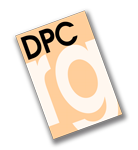When fictions rule the trial: how to explan the dichotomy of fact-finding to criminal defendants?. (RI §417710)

Sobre la problemática en torno a la búsqueda de la verdad material en el proceso penal -
Aneta Petrova
El presente trabajo se propone analizar y aclarar la famosa cuestión relativa a la dicotomía existente en todo proceso penal entre la búsqueda de la verdad material y el predominio del valor “justicia”, fuente de tensiones en unos y otros modelos de justicia penal. Para ello se pone de relieve los principios y normativa procesal desde una visión comparada tomando como punto central de discusión la fase probatoria en el seno del juicio oral. El planteamiento resulta sin duda diferente en un modelo inquisitivo de proceso penal dónde predomina la búsqueda de la verdad material y en un modelo acusatorio en el que prevalece el valor “justicia”. El artículo sostiene la importancia de la corrección de esta ambivalencia por parte del proceso de decisión judicial así como el propio interés de juez y fiscal en preservar el valor “justicia” en el proceso. De este modo solo resultaría admisible aquella actividad probatoria que resultare fiable para la búsqueda de la verdad material pero obtenida de modo justo buscando así la promoción de la convergencia entre Tales principios y valores procesales con las reglas de procedimiento imperantes en el proceso penal.
I. INTRODUCCIÓN.- LA IMPORTANCIA DE LOS PRINCIPIOS DE MINIMIZACIÓN DEL RIESGO EN SEDE PENAL.- III. LA PARADOJA DEL PROCESO PENAL.- IV. LA BALANZA ENTRE BÚSQUEDA DE LA VERDAD (MATERIAL) Y JUSTICIA.- V. NORMAS COMUNES EN MATERIA DE CARGA PROBATORIA.- VI. PERSPECTIVA DESDE LA DEFENSA PENAL.- VII. LA EXCLUSIÓN DE LA PRUEBA ILÍCITA.- VIII. CONCLUSIONES.
Present article provides an important clue to understanding the Dichotomy of Fact-Finding to Criminal Defendants in context of the common references and principles. It focuses on the importance of rethinking the tension between Fairness and Truth in criminal process and deals with the procedural regulations and common standards governing the sequence of proof at trial. The admission of evidence at the trial of a lawsuit facilitates the adjudicative fact-finding process. Nevertheless, these factual decisions are faced by international nature of the evidence. The article argues that the corrective justice as an instrument for allocation of risk should be transplanted in procedure because of concern over what was described as inquisitorial und adversarial. That is a consequence from our believe that both a prosecutor’s and a judge’s interest in criminal process should necessarily correspond to the admission of reliably evidence because the trial seeks justice and regulates law enforcement behavior. This approach would do much to promote efficient convergence between standards and rule of procedure.
I. INTRODUCTORY CONSIDERATIONS.- II. THE IMPORTANCE OF DEVELOPONG RISK-ALLOCATING PRINCIPLES.- III. THE CRIMINAL PROCEDURE PARADOX.- IV. RETHINKING THE TENSION BETWEEN FAIRNESS AND TRUTH.- V. COMMON GUIDE FOR ALLOCATING THE BURDENS OF PROOF.- VI. INTERACTIONS IN CONCEPT CHANGE: CRIMINAL DEFENSE.- VII. CORRECTIVE JUSTICE AS EXCLUDING THE ILEGALLY OBTAINED EVIDENCE.- VIII. CONCLUDING REMARKS.
